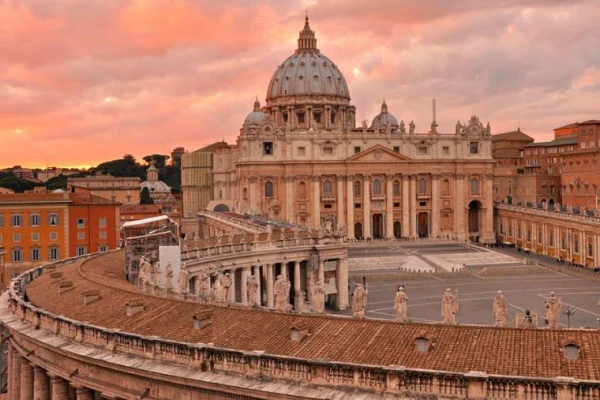
St. Louis, Mo., Feb 21, 2023 / 17:00 pm (CNA).
The Vatican Observatory announced this week the naming of four newly-discovered asteroids after notable Catholics, including Pope Gregory XIII, who began the tradition of papal astronomers and observatories.
Christopher Graney, a scientist at the Vatican Observatory, said in a press release that the Working Group for Small Bodies Nomenclature (WGSBN) of the International Astronomical Union published its latest batch of named asteroids in early February.
The newly-named asteroids include “560974 Ugoboncompagni,” which honors Ugo Boncompagni (1502–1585), Pope Gregory XIII. Gregory commissioned the astronomer Father Christopher Clavius, SJ — who also has an asteroid named after him — to reform the calendar in the 16th century, leading to his namesake Gregorian calendar, still in use today.
The other three names honor Jesuit priests who work or worked at the Vatican Observatory.
“562971 Johannhagen” honors Jesuit Father Johann Hagen (1847–1930), director of the Vatican Observatory from 1906 to 1930. “551878 Stoeger” honors Father Bill Stoeger, SJ (1943–2014), a cosmologist and theologian at the Vatican Observatory. Finally, “565184 Janusz” honors Jesuit Father Robert Janusz (b. 1964), currently on the staff of the observatory.
The naming process for asteroids can take decades, Graney said. After the asteroid’s discovery, it is given a permanent designation number once the object’s orbit is determined well enough that its position can be reliably predicted far into the future.
“At this point, its discoverer is invited to suggest a name for it. Names of pets or names of a commercial nature are not allowed,” Graney continued.
“Names of individuals or events principally known for political or military activities cannot be used until 100 years after the death of the individual or the occurrence of the event,” he said. “Naming rights cannot be purchased. Proposed names are judged by the WGSBN, which is comprised of 15 professional astronomers from around the world with research interests connected with minor planets and comets.”
Graney noted that Catholic priests have in the past and continue to exert an influence on the world of astronomy. Jesuit Father Giovanni Battista Riccioli (1598–1671), for example, developed the system of lunar nomenclature that is still used today. When the Apollo 11 mission landed in the lunar “Sea of Tranquility” in 1969, the name “Tranquility” came from Riccioli, Graney said.
More than 30 asteroids now bear the names of Jesuits, Graney said. Asteroids Johannhagen, Stoeger, and Janusz join several others already named for Vatican Observatory astronomers, including 302849 Richardboyle, 119248 Corbally, 14429 Coyne, 4597 Consolmagno, 23443 Kikwaya, and 11266 Macke.
With roots dating to 1582, the Vatican Observatory is one of the oldest active astronomical observatories in the world. Its headquarters are in Castel Gandolfo, a town just outside Rome and the location of the summer residence of the popes. Pope Leo XIII formally refounded the present observatory in 1891. The Vatican Observatory also operates the Vatican Advanced Technology Telescope, located in rural Arizona about 200 miles southeast of Phoenix.
If you value the news and views Catholic World Report provides, please consider donating to support our efforts. Your contribution will help us continue to make CWR available to all readers worldwide for free, without a subscription. Thank you for your generosity!
Click here for more information on donating to CWR. Click here to sign up for our newsletter.





These are least by the majority that were good Jesuits. That once noble order has become a cult of failure!
About the naming of asteroids after Jesuits, in honor of other Jesuits intent on shooting the Church itself into silent orbit, the search into deep space continues for a Fr. James Martin polyhedral assorrhoid.